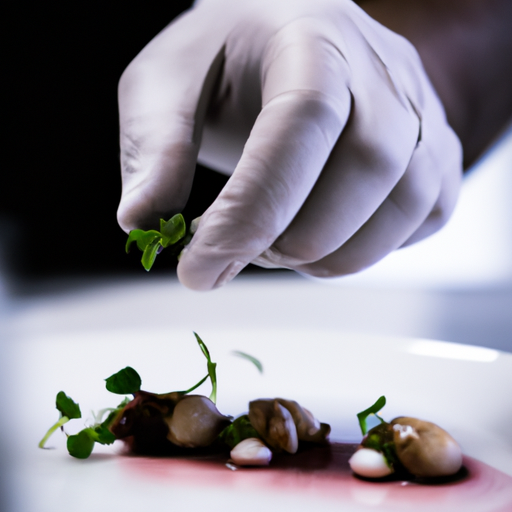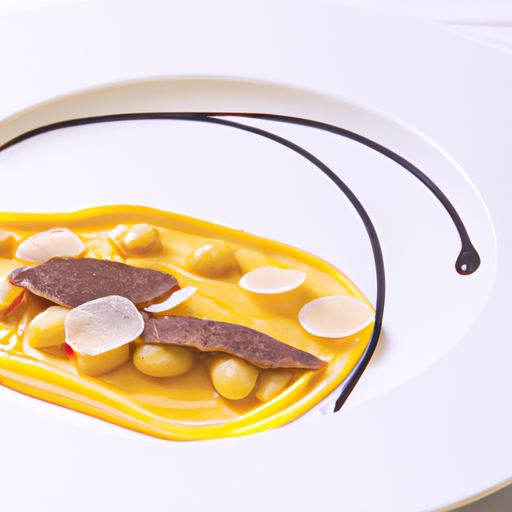-
Table of Contents
- Introduction
- How to Create a Unique Culinary Experience with Local Ingredients
- Tips for Incorporating Unusual Flavors into Your Culinary Experiences
- How to Create a Unique Culinary Experience with Limited Resources
- The Benefits of Incorporating Seasonal Produce into Your Culinary Experiences
- How to Create a Unique Culinary Experience with a Limited Budget
- Conclusion
“Unlock Your Inner Chef and Create a Culinary Experience Like No Other!”
Introduction
Creating a unique culinary experience is a great way to impress your guests and make your event stand out. Whether you’re hosting a dinner party, a wedding, or a corporate event, a unique culinary experience can be the highlight of the evening. With a little creativity and planning, you can create a memorable experience that your guests will talk about for years to come. In this guide, we’ll discuss how to create a unique culinary experience, from choosing the right menu to setting the perfect atmosphere. With the right ingredients, you can create an unforgettable experience that your guests will never forget.
How to Create a Unique Culinary Experience with Local Ingredients
Creating a unique culinary experience with local ingredients is an excellent way to bring a sense of place to your menu. By sourcing ingredients from local farmers, producers, and suppliers, you can create a meal that is both delicious and reflective of the local culture. Here are some tips for creating a unique culinary experience with local ingredients.
1. Research Local Producers: Start by researching local producers in your area. Visit farmers markets, talk to local chefs, and read up on local food trends. This will give you an idea of what ingredients are available and what flavors are popular in the area.
2. Source Local Ingredients: Once you have an idea of what ingredients are available, source them from local producers. This will ensure that you are getting the freshest and most flavorful ingredients.
3. Create a Menu: Create a menu that showcases the local ingredients. Think about how you can combine flavors and textures to create a unique and delicious dish.
4. Use Local Techniques: Incorporate local cooking techniques into your menu. This could include traditional methods of preparation, such as smoking, curing, or pickling.
5. Presentation: Presentation is key when creating a unique culinary experience. Think about how you can plate the dish to make it visually appealing.
By following these tips, you can create a unique culinary experience with local ingredients. Not only will you be able to create a delicious meal, but you will also be able to bring a sense of place to your menu.
Tips for Incorporating Unusual Flavors into Your Culinary Experiences
1. Start Small: When incorporating unusual flavors into your culinary experiences, it is best to start small. Try adding a small amount of the flavor to a dish and gradually increase the amount as you become more comfortable with the flavor.
2. Balance Flavors: When incorporating unusual flavors, it is important to balance the flavors in the dish. This can be done by pairing the unusual flavor with a complementary flavor, such as sweet and sour, or by adding a neutral flavor, such as salt or pepper, to balance out the dish.
3. Experiment: Don’t be afraid to experiment with different flavors and combinations. Try different combinations of flavors and see what works best for you.
4. Use Fresh Ingredients: When incorporating unusual flavors, it is important to use fresh ingredients. Fresh ingredients will provide the best flavor and will help to ensure that the dish is of the highest quality.
5. Use Spices: Spices can be a great way to add unusual flavors to a dish. Try adding a variety of spices to a dish to create a unique flavor profile.
6. Use Herbs: Herbs can also be used to add unusual flavors to a dish. Try adding a variety of herbs to a dish to create a unique flavor profile.
7. Use Condiments: Condiments can be a great way to add unusual flavors to a dish. Try adding a variety of condiments to a dish to create a unique flavor profile.
8. Use Sauces: Sauces can also be used to add unusual flavors to a dish. Try adding a variety of sauces to a dish to create a unique flavor profile.
9. Use Marinades: Marinades can be a great way to add unusual flavors to a dish. Try adding a variety of marinades to a dish to create a unique flavor profile.
10. Taste as You Go: When incorporating unusual flavors into your culinary experiences, it is important to taste as you go. This will help you to adjust the flavors as needed and ensure that the dish is of the highest quality.
How to Create a Unique Culinary Experience with Limited Resources
Creating a unique culinary experience with limited resources can be a challenge, but it is possible. Here are some tips to help you create a memorable experience with limited resources.
First, focus on the quality of the ingredients. Even if you are working with a limited budget, you can still find high-quality ingredients. Look for local farmers markets or specialty stores that offer fresh, seasonal ingredients. This will ensure that your dishes are flavorful and memorable.
Second, think outside the box when it comes to presentation. Presentation is key when it comes to creating a unique culinary experience. Consider using unique serving dishes or plating techniques to make your dishes stand out.
Third, focus on the details. Even small touches can make a big difference. Consider adding a garnish or a special sauce to your dishes to make them more interesting.
Finally, don’t forget about the atmosphere. The atmosphere of your dining experience is just as important as the food. Consider adding candles, music, or other decorations to create a unique atmosphere.
By following these tips, you can create a unique culinary experience with limited resources. With a little creativity and attention to detail, you can create a memorable experience that your guests will never forget.
The Benefits of Incorporating Seasonal Produce into Your Culinary Experiences
Incorporating seasonal produce into your culinary experiences can be a great way to add flavor, nutrition, and variety to your meals. Seasonal produce is often fresher and more flavorful than produce that has been stored for long periods of time, and it can also be more affordable. Here are some of the benefits of incorporating seasonal produce into your culinary experiences.
First, seasonal produce is often fresher and more flavorful than produce that has been stored for long periods of time. This is because seasonal produce is harvested at its peak ripeness, which means that it has had more time to develop its flavor and nutrition. Additionally, seasonal produce is often more affordable than produce that has been stored for long periods of time, as it is more readily available.
Second, incorporating seasonal produce into your culinary experiences can help you to create more interesting and varied dishes. By using seasonal produce, you can create dishes that are unique and flavorful, as the produce will be at its peak ripeness and flavor. Additionally, you can use seasonal produce to create dishes that are more nutritious, as seasonal produce is often higher in vitamins and minerals than produce that has been stored for long periods of time.
Finally, incorporating seasonal produce into your culinary experiences can help to reduce food waste. By using seasonal produce, you can ensure that you are using the freshest ingredients available, which means that you are less likely to waste food. Additionally, using seasonal produce can help to reduce your environmental impact, as it is often grown locally and does not require long-distance transportation.
Incorporating seasonal produce into your culinary experiences can be a great way to add flavor, nutrition, and variety to your meals. By using seasonal produce, you can create dishes that are unique and flavorful, as well as more nutritious and environmentally friendly. Additionally, you can help to reduce food waste and save money by using seasonal produce. With all of these benefits, incorporating seasonal produce into your culinary experiences is a great way to enhance your meals.
How to Create a Unique Culinary Experience with a Limited Budget
Creating a unique culinary experience with a limited budget can be a challenge, but it is possible. Here are some tips to help you create a memorable experience without breaking the bank.
First, focus on the quality of the ingredients. Even if you are working with a limited budget, you can still find high-quality ingredients. Look for local farmers markets or specialty stores that offer fresh, seasonal ingredients at a reasonable price.
Second, think outside the box when it comes to presentation. Presentation is key when it comes to creating a unique culinary experience. Consider using unique serving dishes, plating techniques, and garnishes to make your dishes stand out.
Third, focus on the atmosphere. The atmosphere of your event can be just as important as the food. Consider creating a theme for your event and decorating accordingly. You can also use music, lighting, and other elements to create a unique atmosphere.
Finally, don’t forget about the drinks. A unique cocktail or signature drink can be a great way to add a special touch to your event. Consider creating a signature drink that complements the food you are serving.
By following these tips, you can create a unique culinary experience with a limited budget. With a little creativity and planning, you can create an unforgettable experience for your guests.
Conclusion
Creating a unique culinary experience is a great way to bring people together and create lasting memories. It requires careful planning and attention to detail, but the results can be truly amazing. By taking the time to research ingredients, create a menu, and plan the event, you can create a unique culinary experience that your guests will remember for years to come.


